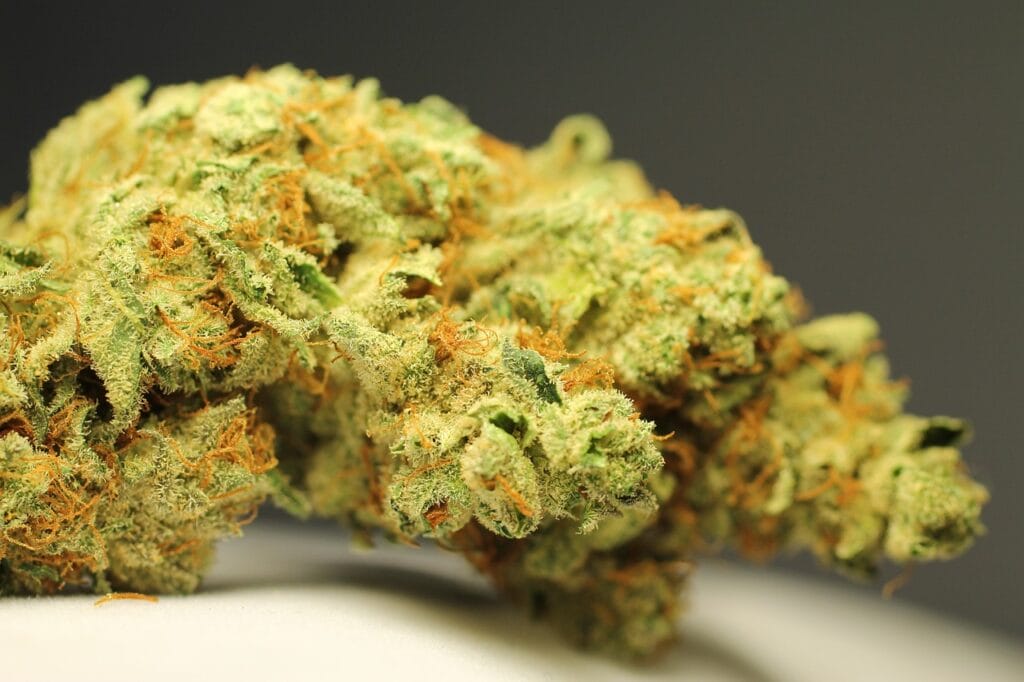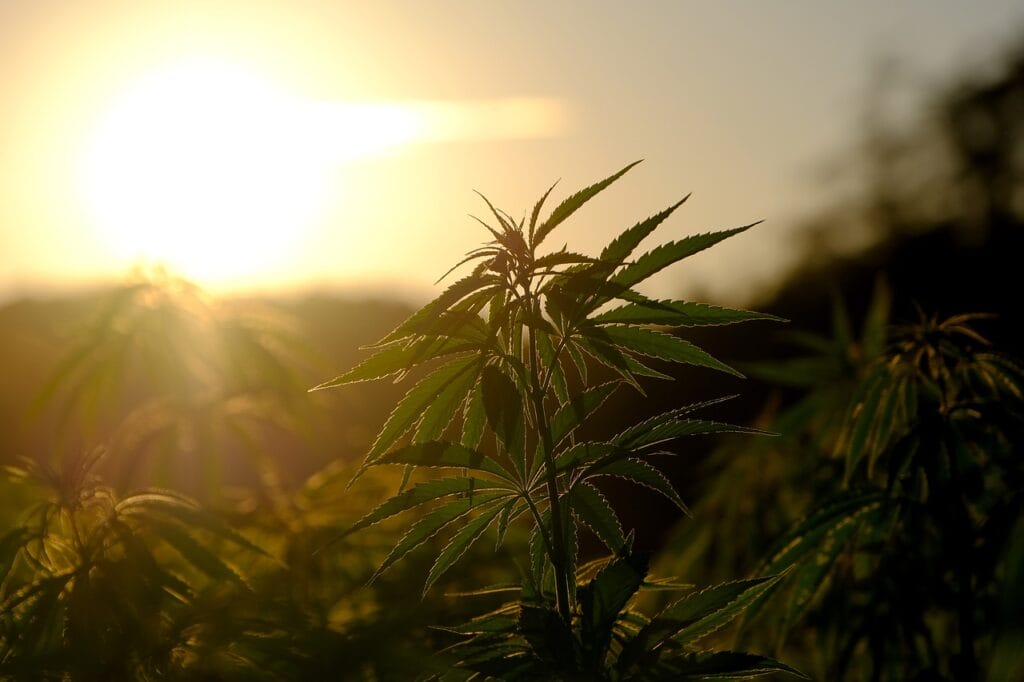When you buy Indica flower online, you’re choosing a type of cannabis that induces relaxing and sedative effects. Indicas have more to offer than just their calming effects. They also have a rich history that many consumers overlook, as they focus primarily on the plant’s effects. Understanding what makes Indicas unique and what they are composed of can provide a deeper appreciation of this distinctive marijuana variety.
Table of Contents
- Key Takeaways:
- Historical Background and Early Classification And Discovery
- Characteristics
- Psychoactive and Therapeutic Properties
- Modern Cultivation and Popularity of Indica Cannabis
- Distinction from Other Marijuana Varieties
- Buy Indica Weed Online: A Variety of Selections to Induce Relaxation
- Cannabis Indica Strains: Beyond Their Cold-Loving Nature
- Frequently Asked Questions

Key Takeaways:
- Jean-Baptiste Lamarck first described the weed in 1785, using samples from India.
- Indicas induce relaxation, stress relief, and a sense of calm and serenity.
- Indicas thrive in moderate daytime temperatures of 65-80°F (18-27°C) and benefit from cooler nighttime temperatures to support their growth.
Historical Background and Early Classification And Discovery
In 1753, Carl Linnaeus, a key figure in modern taxonomy, classified weed in “Species Plantarum.” He identified sativa and various forms based on the plant’s sex, such as C. mas and C. femina. Linnaeus did not use the term “Indica” and considered all known variations to be the same species, C. sativa. His entry on marijuana includes a small note that reads: “Habitat in India.” This reflects the common belief of the time that, since people domesticated European hemp, then a wild variety must exist elsewhere.
Introducing Its Official Name
Jean-Baptiste Lamarck first described the weed in 1785, based on samples from India. He noted differences in leaf shape, stem firmness, and psychoactive results compared to European varieties. Lamarck’s observations highlighted the distinct “drunkenness” and gaiety produced by this plant.
Lamarck’s samples came from Pierre Sonnerat, a French naturalist who collected them in India. This marked a shift from European observations to direct accounts from native regions. The colonial era provided botanists with firsthand knowledge and specimens and enhanced their understanding of it.
The Rise and Fall of Its Identification
In the early 19th century, British botanists like John Lindley and Christiaan Hendrik Persoon viewed it as a variety of Sativa. This monotypic perspective persisted despite emerging research suggesting distinct species. The debate reflects the challenges in botanical classification influenced by varying interpretations.
Court Case to Official Name
For centuries, botanists and taxonomists have debated the nature of marijuana. The monotypic view—treating all variations as a single species—remained a strong, though not undisputed, scientific consensus until 1973. Scholars outside these fields challenged this view due to limited knowledge or convenience, proposing various polytypic schemes.
Despite this ongoing scientific debate, the arguments have effectively recognized this plant as a distinct type, which grants it status and significance. The precise scientific meaning of the term remains contentious and unresolved.
Characteristics
This plant’s characteristics distinguish it from Sativa strains. Recreational users commonly classify cultivars based on plant morphology (phenotype).
Physical Traits
Plant Size and Structure:
- Compact Growth: Indica plants are shorter and more compact than Sativa strains. They range from 2 to 4 feet in height. Suitable for indoor cultivation and limited-space environments.
- Stocky Stems: The stems are thick and sturdy, which supports the dense foliage and heavy buds. This robust structure results from adaptation to withstand harsh weather conditions in their native mountainous regions.
Leaf Characteristics
- Wide, Broad Leaves: Features wide, broad leaves with a deep green colour. The leaves are broader and denser than Sativas. This dense foliage helps the plant retain moisture and survive in colder temperatures.
- Leaf Arrangement: Arranged in a staggered pattern along the stems, which contributes to the plant’s overall bushy appearance.
Flowering Traits
- Dense Buds: Indica flowers produce dense, compact buds that are heavier and more resinous than those of Sativa plants. The dense structure helps in maximizing the production of cannabinoids and terpenes.
- High Resin Production: Known for their high resin content, which is necessary for their therapeutic properties. The trichomes (resin glands) on Indica buds are abundant and sticky.
The buds can vary in colour but display rich hues, including deep greens, purples, and even blues. Temperature and light exposure can influence this coloration.
Growth Conditions
They thrive in moderate daytime temperatures ranging from 65-80°F (18-27°C), with cooler nighttime temperatures to support their growth. These strains are well-suited to environments with low relative humidity, as high humidity can lead to mould and mildew.
They require well-drained, less moist soils, such as sandy or loamy types to prevent root rot and ensure proper nutrient uptake. It is important to allow the soil to dry out between sessions to avoid overwatering issues.
They do well in full sunlight, requiring approximately 6-8 hours of direct light. They adapt well to both outdoor and indoor environments. For indoor setups, a 12-hour light and 12-hour dark cycle during the flowering stage is essential for healthy bud production.
These strains’ physical and growth characteristics have evolved to endure the extreme weather of their native environments. Their short stature, dense foliage, and high resin production adapt to cold temperatures, limited water availability, and intense sun exposure.
Cannabinoid and Terpene Profiles
- Cannabinoids: Tend to have higher levels of CBD (cannabidiol), which contributes to their therapeutic results like pain relief and relaxation.
- Terpenes: Characterized by earthy, spicy, and sweet aromas. These terpenes not only enhance the plant’s aroma but also contribute to its overall results and therapeutic properties.
Psychoactive and Therapeutic Properties
The high is pleasant, with a body buzz. This plant is mainly valued for its relaxation, stress relief, and sense of calm and serenity. It is reputed to be effective in relieving body pain and is used to treat insomnia. Some strains are highly potent in THC and can induce the ‘couchlock’ effect, which encourages the user to sit still and fully enjoy the experience.
Medicinal Benefits
Its cannabinoids interact with the endocannabinoid system to alleviate chronic pain conditions by reducing inflammation and blocking pain signals.
It is effective in muscle relaxation and spasm control, benefiting conditions like multiple sclerosis and fibromyalgia through its anti-inflammatory and muscle-relaxing results. It also reduces anxiety and stress, with strains high in CBD and low in THC, providing calming results without a strong high.
Recreational Benefits
- Relaxation and Euphoria: Induces deep relaxation and a sense of euphoria, which is ideal for unwinding after a long day and achieving a tranquil state.
- Creative Stimulation: Despite common stereotypes, certain cannabis strains can enhance creativity. Many users report that it increases inspiration and focus, which can benefit artistic expression and exploring new ideas.
- Enhanced Sensory Experiences: Heighten sensory experiences amplify the enjoyment of music, food, and nature. Users experience enhanced sound perception, intensified taste sensations, and a deeper connection to the natural world.
Modern Cultivation and Popularity of Indica Cannabis
Its cultivation has advanced with the rise of precision farming technologies and sustainable practices. Indoor cultivation offers control over environmental conditions, while outdoor methods leverage natural resources but face environmental variability.
Innovations like hydroponics and climate control optimize growth, while organic and energy-efficient practices address sustainability concerns.
Regulatory air quality and emissions requirements are significant, especially for large-scale indoor operations. Proper management, including carbon adsorption systems and compliant exhaust stacks, is essential for minimizing environmental impact.
Distinction from Other Marijuana Varieties
The three common subspecies belong within the same species, which means they share a species classification but exhibit significantly different physical traits.
| Characteristics | Indica Strain | Sativa | Ruderalis |
| Origin | Afghanistan, India, Pakistan, Turkey | Tropics | Eastern Europe, Himalayas, Siberia, Russia |
| Plant Description | Short, stocky, bushy, with broad, chunky leaves | Tall, thin, with finger-like leaves | Small, bushy, rarely over 12 inches tall |
| Growth Conditions | Prefers cooler climates with moderate temperatures and low humidity | Thrives in hot, dry climates with long sunny days | Rapid growth cycle; adapted to extreme environments |
| Maturation Time | Faster growth produces more buds | Longer maturation period | Very fast growth; seed to harvest in about a month |
| Cannabinoid Profile | Higher CBD, variable THC levels | Higher THC, lower CBD levels | Low THC, high CBD |
| Day/Night Use | Used at night | Used during the day | Not commonly used; effects are minimal |
Buy Indica Weed Online: A Variety of Selections to Induce Relaxation
Cultivating this plant requires extensive equipment and time before you can use it. A more practical option is to purchase the cannabis flower online, either in small quantities or in bulk.
| Strain | Rating | THC/CBD | Flavours | Experience |
| Cookies Kush | AAA+ | 20 / 0.5 | Minty, Pungent, Sweet | Euphoric and relaxing |
| Cake Bomb | AAA+ | 24 / 0.2 | Citrus, Herbal | Relaxing and sedating |
| Platinum Candy | AAA+ | 21 / 0.2 | Earthy, Sweet | Euphoric and happy |
| Purple Punch | AA+ | 24 / 0.6 | Citrus, Grape | deeply relaxing and euphoric |
| Ice Cream Mintz | AAA | 24 / 0.6 | Pepper, Mint | Hungry, giggly, and happy |
Cannabis Indica Strains: Beyond Their Cold-Loving Nature
While many know that Indica weed strains originate from the colder Hindu Kush mountains, these plants can also adapt to varying weather conditions. Their physical characteristics allow them to thrive in diverse environments. Beyond their adaptability, they offer a relaxing and more sedating experience than a sativa strain due to their unique chemical composition. Experience the effects, aroma, and flavour by purchasing from GrassLife.
Frequently Asked Questions
Do Indicas induce the munchies?
Yes, and so does Sativas, but not all strains from these categories may increase the appetite. Increased THC content can induce the munchies. THC stimulates appetite by activating the CB1 receptor. This activation triggers a chain reaction that can increase hunger and food intake.
One effect of this activation is the release of ghrelin, a hormone that signals hunger.
What is the most dominant terpene?
Most Indicas have a high dominance of β-myrcene, with limonene or α-pinene as the second most abundant terpenoids. Myrcene has sedating and relaxing effects and may help relieve inflammation and pain.
What are Indica-dominant marijuana?
This is a hybrid plant with a high concentration of Indicas. It combines euphoric, uplifting effects with relaxing, sedating highs, with the latter being more pronounced.
Related Articles:




